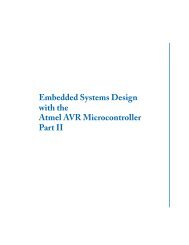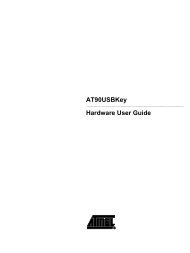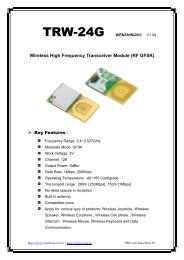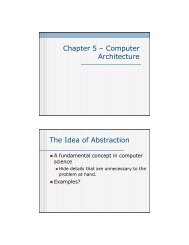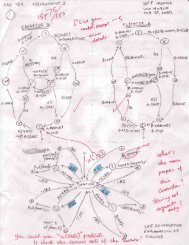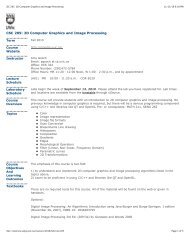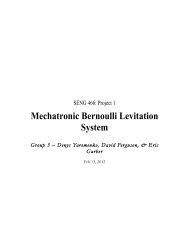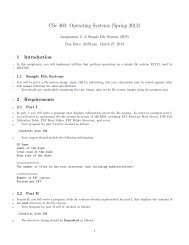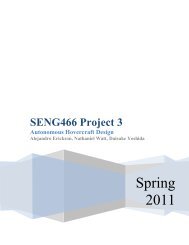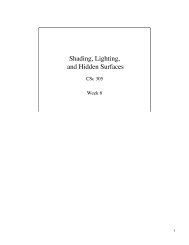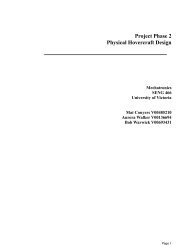Icon - Department of Computer Science - University of Victoria
Icon - Department of Computer Science - University of Victoria
Icon - Department of Computer Science - University of Victoria
You also want an ePaper? Increase the reach of your titles
YUMPU automatically turns print PDFs into web optimized ePapers that Google loves.
Examples <strong>of</strong> these operators are shown in Figure 2.4. One <strong>of</strong> advantages to use CSG<br />
is that topological changes can be handled easily. For example, a hole can be created<br />
on an implicit volume using the difference operator with another implicit volume.<br />
Nevertheless, CSG creates discontinuity between two scalar fields, which results in<br />
undesirable artifacts when blending (Section 2.1.3) is applied. There are several<br />
approaches for applying CSG operators while preserving continuity. For example,<br />
R-Functions in FRep construct C n continuous CSG operators [40]. Barthe proposed<br />
CSG operators which can preserve G 1 continuous scalar fields [5].<br />
Figure 2.4: Two implicit spheres to which CSG operators are applied and the result<br />
scalar fields. Union operator (a), Intersection operator (b), and Difference operator<br />
(c).<br />
2.1.3 Blending<br />
Blending is another modeling advantage <strong>of</strong> implicit surfaces in addition to CSG op-<br />
erators. This operator can create smooth transitions between two objects. It is quite<br />
difficult to apply blending to other shape representations such as point based repre-<br />
sentations and parametric representations while blending can be trivially computed<br />
in implicit surface representations. A blending operator fA+B(p) between two scalar<br />
11


